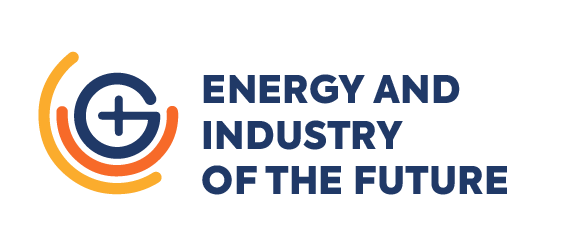Year 1: M1 Mechanics (MAM) – Semesters 1 & 2
The first year of the M1 MAM (semesters 1 and 2) is common to all students in the Master’s in Mechanics who intend to specialise in an M2 track related to mechanics, energetics, or biomechanics, either professionally (specialisation in Modelling and Applications in Mechanics) or in research (specialisations in Fluid Mechanics, Biomechanics, Structural and Systems Dynamics, Tribology and Surface Engineering, Mechanics of Materials and Processes).
This first year focuses on the acquisition of fundamental knowledge in fluid mechanics and energetics, structural mechanics, vibrations, and numerical methods. Professionalisation begins in semester 1 with a choice of “integrative project”, running throughout the year (bibliographic research in semester 1, project implementation in semester 2). It is further reinforced in semester 2 with short projects, English language, communication, and socio-economic training.
Year 2: M2 Mechanics (MAM) – Semesters 3 & 4
The second year comprises lectures, tutorials, and practical work delivered by academic teams and industry professionals. This is complemented by tutored industrial projects and a minimum 20-week internship, providing significant exposure to the industrial environment. The internship is supervised by an appointed internship director, validated by the Master’s academic committee. During the year, students are strongly encouraged to develop autonomy. Each student has both an industrial tutor and an academic tutor who jointly oversee progress and evaluate performance during the internship.
The Modelling and Applications in Mechanics specialisation offers two profiles:
The curriculum for each profile consists of the following components:
-
Fundamental Courses: Turbulent Flow Physics, Complex Flows, Nonlinear Structural Mechanics, Rapid Dynamics, Multi-body Systems Mechanics
-
Theoretical and Applied Tools: Numerical Methods, Computer-Aided Design, Object-Oriented Programming, High-Performance Computing, Operating Systems
-
Methodological Tools: Modelling, Simulation, Introduction to Industrial Codes, Data Processing and Analysis
-
Engineering Approach and Industry Knowledge: Industrial projects, socio-economics, languages, industrial seminars
Courses are organised into a common core for both profiles (30 ECTS) and specific modules for each track (6 ECTS). For each profile, students select three modules from a choice of four, allowing them to tailor their study path to align with their professional objectives.
For both years, most courses are available electronically via the Mechanics Department’s online platform: http://ufrmeca.univ-lyon1.fr/moodle/
Numerical modelling and simulation of mechanical and energy-related problems are increasingly used throughout the stages of industrial project development. Consequently, companies seek graduates who not only master advanced computing tools and numerical codes but also possess a solid understanding of the underlying physical models and numerical techniques.
The “Modelling and Simulation in Mechanics – Use of Industrial Codes” track is designed to produce graduates with this dual expertise, offering a coherent and comprehensive programme that integrates both fundamental theoretical knowledge and applied professional skills.
Admission to the first year (M1) in Mechanics:
Students who have completed a Bachelor’s degree (L3) in Mechanics, Physics, or Mathematics are eligible for this programme.
Holders of a professional bachelor’s degree must first validate a general bachelor’s degree before applying for the Master in Mechanics.
Admission to the second year (M2) in Mechanics:
Students who have completed an M1 in Mechanics or Physics are eligible for this programme.
The following prerequisites are required to follow this pathway:
-
Fluid Mechanics
-
Solid Mechanics
-
Numerical Methods
Graduates of this Master’s programme can pursue careers in sectors such as aeronautics, aerospace, automotive, transportation, pneumatics, ocean engineering, energy production and conversion, engines and propulsion, mechanical industries, and more.
The competencies acquired by holders of the Master’s in Mechanics include:
-
Fundamental knowledge in fluid mechanics, solid mechanics, and structural mechanics, enabling participation in the design, implementation, and management of projects.
-
Ability to use computational software in these fields, supporting work in design offices, research and development, and industrial applications.
Holders of the Master’s in Mechanics can occupy positions such as Design Engineer or Research Engineer, working in a design office or within a research and development team.
Admission to M1:
Admission to the first year (M1) is granted following selection by the Master’s Admission Committee.
Applicants for the first year must have 180 ECTS credits obtained from a Bachelor’s degree in Mechanics or a degree with a similar curriculum.
Applications from students from other academic backgrounds or holders of foreign degrees are reviewed by the Master’s Admission Committee.
Admission to M2:
Admission to the second year (M2) is granted following selection by the Master’s Admission Committee.
Applicants for the second year must have 60 ECTS credits obtained after the Bachelor’s degree, or 240 ECTS credits for candidates coming from an engineering programme, and must have a background consistent with the themes of the professional-oriented Master specialisations.
Applications from students from other academic backgrounds or holders of foreign degrees are reviewed by the Master’s Admission Committee.
Applications for the Master in Mechanics (M1 or M2) are submitted via the eCandidat platform:
https://ecandidat.univ-lyon1.fr/#!accueilView

















